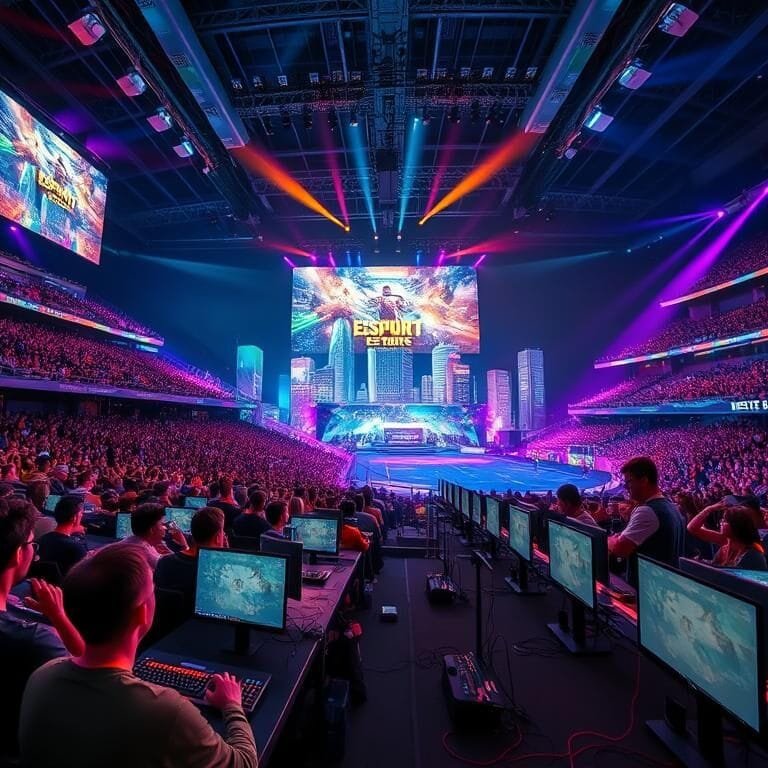The tokenization of real-world assets is on the verge of becoming a trillion-dollar crypto market. The global market capitalization for Real-World Assets (RWAs) has already hit $10.62 billion. It’s expected to jump to nearly $18 billion by early 2025.
This shift in the financial landscape is driven by the growing adoption of blockchain technology and increasing institutional investment.
As regulatory clarity improves, the tokenization of assets like real estate and securities is becoming more mainstream. For example, BlackRock’s $2.9 billion tokenized U.S. Treasury fund shows the growing interest in this space. Expect more growth as more institutions explore tokenization’s full range of investment opportunities.
Key Takeaways
- The global tokenization market is projected to hit $24 trillion by 2027.
- Institutional adoption and regulatory clarity are driving the growth of tokenization.
- Real-world assets such as real estate and securities are being tokenized.
- The Total Value Locked (TVL) in DeFi platforms is expected to triple by 2025, as per experts’ predictions.
- Tokenization is unlocking new investment opportunities and changing the financial landscape.
Understanding Tokenization and Its Importance
Tokenization is a simple yet powerful idea. It turns real-world assets into digital forms. This could change how we view ownership and investing.
What is Tokenization?
Tokenization changes asset rights into digital tokens on a blockchain. Instead of physical assets, you own a digital version. This makes trading and transferring assets secure, transparent, and efficient.
How Tokenization Works
The first step in tokenization is picking an asset to tokenize. This could be real estate, art, or securities. After choosing, the asset’s value is evaluated.
Then, a digital token is created to represent ownership. This token is issued on a blockchain. Here, it can be bought, sold, or traded.
Blockchain technology makes the process secure and transparent. It keeps a permanent, public record of all transactions.
Benefits of Tokenization
Tokenization brings several benefits:
- Increased Liquidity: It makes assets more affordable, boosting market liquidity.
- Fractional Ownership: It allows many to own parts of valuable assets.
- Enhanced Security and Transparency: Blockchain ensures all transactions are secure and clear.
These advantages make tokenization appealing for investors and asset owners. It offers a new way to invest and own assets.
Real-World Assets That Can Be Tokenized
Real-world assets like real estate and art are now being turned into digital tokens. This change offers new ways to invest. It makes it easy to buy, sell, and trade these assets online.
Real Estate
Real estate tokenization is a big deal. It lets people own parts of properties, making it easier to invest. For example, a fancy apartment building can be split into digital tokens.
This makes it easier for more people to invest in real estate. It also makes it easier to sell and buy properties.
Benefits of real estate tokenization include easier entry, more liquidity, and the chance for better returns through diversification.
Art and Collectibles
Tokenizing art and collectibles is also changing the game. It helps prove ownership and avoid forgeries. It also lets more people own parts of expensive art.
For instance, a famous painting can be split into digital tokens. This way, many people can own a piece of it.
As an expert noted, “The tokenization of art and collectibles is changing how we buy, sell, and own art. It makes it more accessible and clear.“
Commodities and Precious Metals
Gold and silver can also be turned into digital tokens. These tokens represent ownership of a certain amount of the metal. They can be traded online, making it easier and clearer to buy and sell.
For more on tokenizing commodities, check out this educational resource.
Stocks and Securities
Tokenization is also used for stocks and securities. It makes it easier to issue, trade, and settle these financial tools. It also lowers costs and makes things more efficient.
Tokenized stocks and securities can be traded on blockchain platforms. This brings more transparency and access to investing.
The benefits include more efficiency, lower costs, and clearer transactions. As the tech grows, we’ll see more financial tools turned into tokens.
The Advantages of Tokenizing Real-World Assets
By turning real-world assets into digital tokens, we get a more flexible and secure way to invest. Tokenization brings many benefits that change how we invest and own things.
Increased Liquidity
Tokenization’s main perk is increased liquidity. Traditional assets like real estate can be hard to sell quickly. But, tokenization breaks them down into smaller parts, making it easier to buy and sell.
This means you can get your money faster when you need it. Also, trading tokens online makes it simpler to get in or out of investments.
Fractional Ownership
Tokenization makes fractional ownership possible. This lets many investors share in the value of a big asset. It’s great for things like art, real estate, or rare items.
For example, you can own a piece of a luxury property or art without buying the whole thing. This makes big investments more accessible to everyone.
| Asset Type | Benefits of Fractional Ownership |
|---|---|
| Real Estate | Increased diversification, reduced capital requirements |
| Art and Collectibles | Access to high-value assets, portfolio diversification |
| Commodities | Easier to trade, reduced minimum investment thresholds |
Enhanced Security and Transparency
Blockchain technology makes tokenization more secure and transparent. Its decentralized ledger keeps all transactions safe and tamper-proof. This builds trust among investors.
With blockchain, you can see who owns what and all transaction history clearly. It also keeps your investments safe from unauthorized access or tampering.
In summary, tokenizing real-world assets offers many benefits. These include more liquidity, the chance for fractional ownership, and better security and transparency. Exploring tokenization can greatly improve your investment strategy and financial portfolio.
Challenges in Implementing Tokenization
Tokenization faces many challenges that could slow its growth. As the field grows, it’s key to tackle these hurdles. This will help tokenization become a big part of our financial systems.
Regulatory Hurdles
Regulatory uncertainty is a big challenge for tokenization. Laws about tokenized assets vary by place. This makes it hard for companies and investors to know what to do.
Key regulatory challenges include:
- Unclear or inconsistent regulations across different jurisdictions.
- The need for compliance with existing financial regulations.
- Evolving regulatory frameworks that may impact tokenized assets.
Technological Barriers
Technology is another big challenge for tokenization. Problems like scalability, security, and working with different blockchain systems are major hurdles. These issues can make tokenized assets hard to use.
| Technological Barrier | Description | Potential Impact |
|---|---|---|
| Scalability | The ability of blockchain networks to handle a high volume of transactions. | Slow transaction processing times can deter users. |
| Security | Vulnerabilities in smart contracts or wallet services. | Potential loss of assets due to hacks or exploits. |
| Interoperability | The ability of different blockchain systems to work together seamlessly. | Limited interoperability can restrict the liquidity and usability of tokenized assets. |
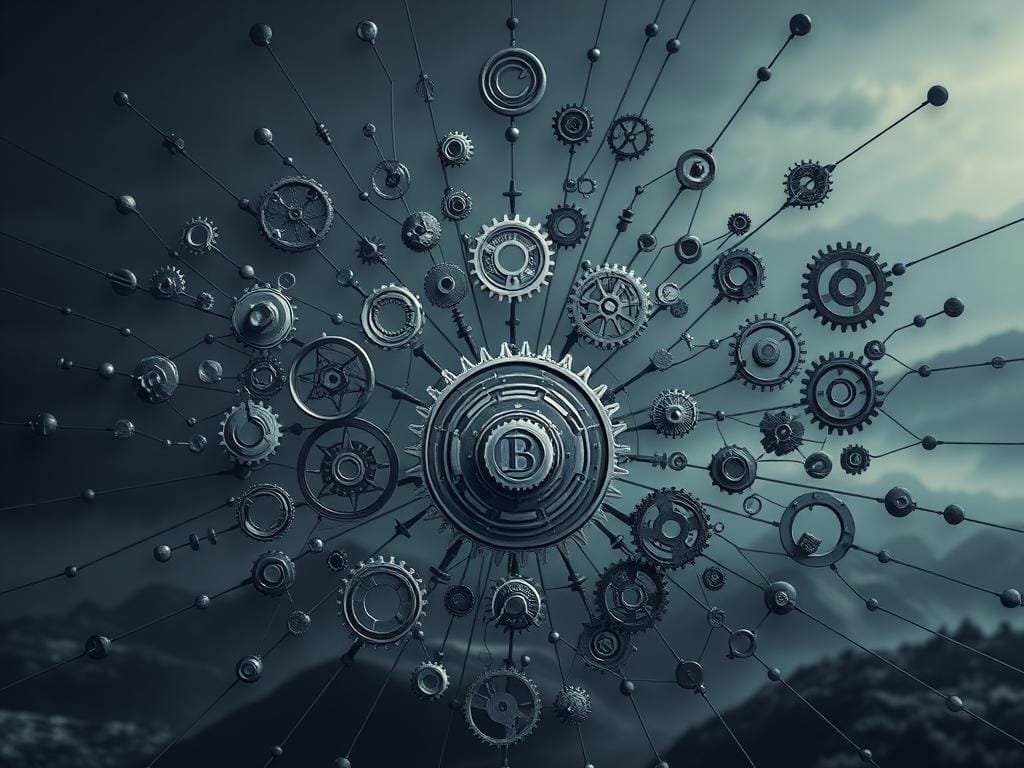
Market Acceptance
Getting people to accept tokenization is also key. Both companies and investors need to see the value. Education and awareness can help a lot.
The future of tokenization depends on overcoming these challenges. By solving these problems, we can make tokenization better. It will help our financial system work better, be more open, and be more fair.
Key Players in the Tokenization Space
The future of tokenization is being shaped by a mix of established and new players. As the market continues to evolve, various stakeholders are contributing to its growth and development.
Blockchain Platforms
Blockchain platforms are the backbone of the tokenization ecosystem. They provide the necessary infrastructure for creating, managing, and trading digital assets. Ethereum is one of the most prominent blockchain platforms. It is known for its smart contract functionality that enables the tokenization of assets.
Other notable blockchain platforms include:
- Polkadot, which allows for interoperability between different blockchain networks.
- Solana, known for its high-speed transactions and low fees.
- Binance Smart Chain, which offers a robust infrastructure for decentralized applications.
Financial Institutions
Financial institutions are increasingly getting involved in tokenization. They recognize its huge potentials to transform traditional financial markets. BlackRock and JPMorgan are among the prominent financial institutions exploring tokenization.
| Financial Institution | Tokenization Initiatives |
|---|---|
| BlackRock | Exploring tokenization for investment funds |
| JPMorgan | Developing blockchain-based solutions for securities trading |
Startups and Innovators
Startups are playing a key role in innovating and pushing the boundaries of tokenization. Companies like RealT and ArtToken are pioneering the tokenization of real estate and art, respectively.
These startups are not only showing the huge potentials of tokenization. They are also driving adoption across various industries.
The Role of Blockchain in Tokenization
Blockchain is key to tokenization, making it possible to create digital tokens and use smart contracts. These tools help automate processes.
Blockchain Technology Explained
Blockchain is a digital ledger that records transactions on a network of computers. It makes sure transactions are safe, open, and can’t be changed. Blockchain is the base of tokenization, making it easy to handle and move digital assets.
Because blockchain isn’t controlled by one person, it’s safer and more trustworthy. This is vital for tokenization, where keeping transactions safe is critical.
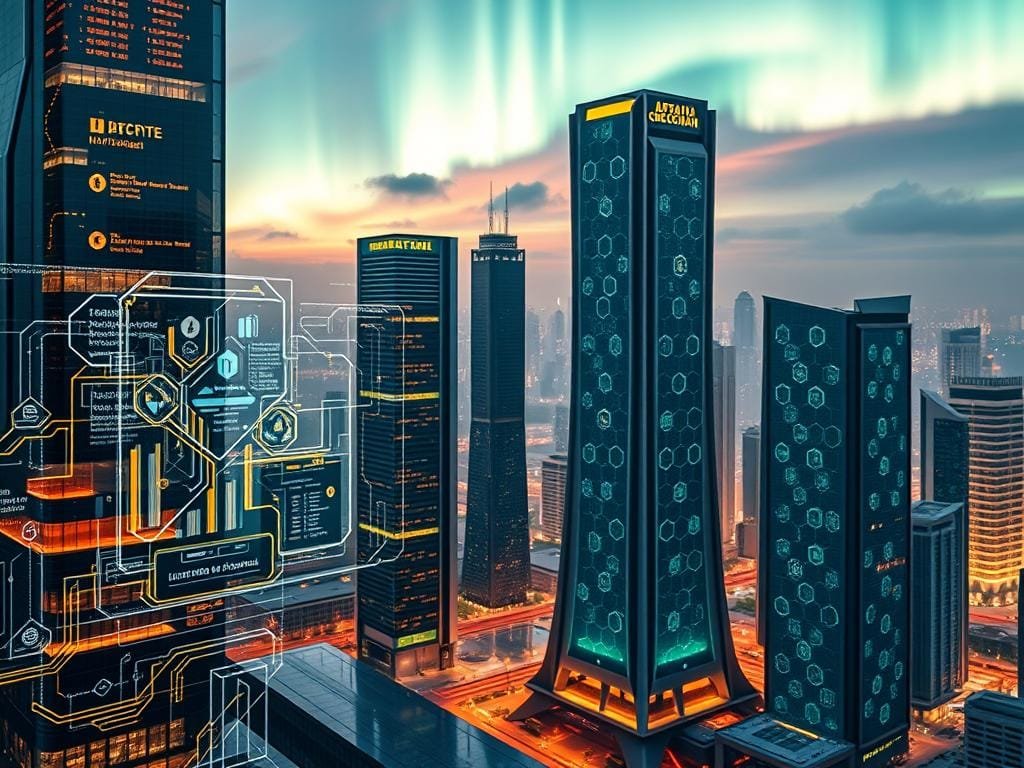
Smart Contracts for Tokenization
Smart contracts are programs that carry out agreements on their own. They are key in tokenization for automating tasks like making, sharing, and managing digital tokens. For more on tokenization, check out Gemini’s Cryptopedia.
Smart contracts make tokenization better by making sure things happen as planned, without middlemen. This saves money and reduces the chance of mistakes or disagreements.
Smart contracts also let us make complex financial products. This opens up new possibilities for this technology.
Use Cases of Tokenization in Practice
Tokenization is changing the game in real estate, art, and supply chains. It makes things more efficient and clear. This tech could change how we handle and invest in assets.
Real Estate Tokenization Platforms
Real estate tokenization lets people buy, sell, and trade parts of properties. It’s making the real estate market more liquid and opening up new investment chances.
Platforms like RealT and Tokensoft lead the way with blockchain for real estate. They turn properties into digital tokens. This means you can own a piece of a property and easily move it.
| Platform | Description | Benefits |
|---|---|---|
| RealT | Platform for tokenizing real estate assets | Increased liquidity, fractional ownership |
| Tokensoft | Blockchain platform for tokenizing assets | Enhanced security, transparency |
Art Investment Platforms
Art investment platforms use tokenization to open up art to more investors. They let people buy parts of art, making it easier to get into the art world.
“Tokenization is democratizing access to art investment, allowing a broader range of investors to participate in the art market.” –
Masterworks is leading this change, creating a place for tokenized art. It makes art investment easier and boosts the art market’s liquidity.
Tokenization in Supply Chains
Tokenization is also changing supply chains. It makes tracking goods and products easier, cutting down on counterfeiting and improving logistics.
Companies like Maersk and IBM are using blockchain for this. It’s set to change the global trade scene a lot.
Regulatory Landscape Affecting Tokenization
Tokenization is growing fast, and knowing the rules is key for investors and others. The rules for tokenization are complex and changing. Different places have their own rules.
Current Regulations in the U.S.
The U.S. has made big moves in tokenization rules. The GENIUS Act passed by the U.S. Senate is a big step. It aims to create a clear federal framework for digital assets.
Key Regulatory Aspects:
- How digital assets are classified
- Following securities laws
- Rules against money laundering and knowing your customers
In the U.S., there are both federal and state rules for tokenization. For example, the SEC leads in figuring out which digital assets are securities. They also make sure these assets follow the law.
| Regulatory Body | Role in Tokenization | Key Regulations |
|---|---|---|
| SEC | Checks if digital assets follow securities laws | Figuring out what digital assets are, following securities laws |
| FINCEN | Enforces rules against money laundering and knowing your customers | Rules for digital asset transactions to prevent money laundering and know your customers |
| CFTC | Regulates commodities and derivatives | Watching over digital assets related to commodities |
Future Regulatory Trends
The rules for tokenization will likely change more in the future. Some possible changes include:
- Clearer rules on what digital assets are
- Tighter rules against money laundering and knowing your customers
- More cooperation between countries on rules
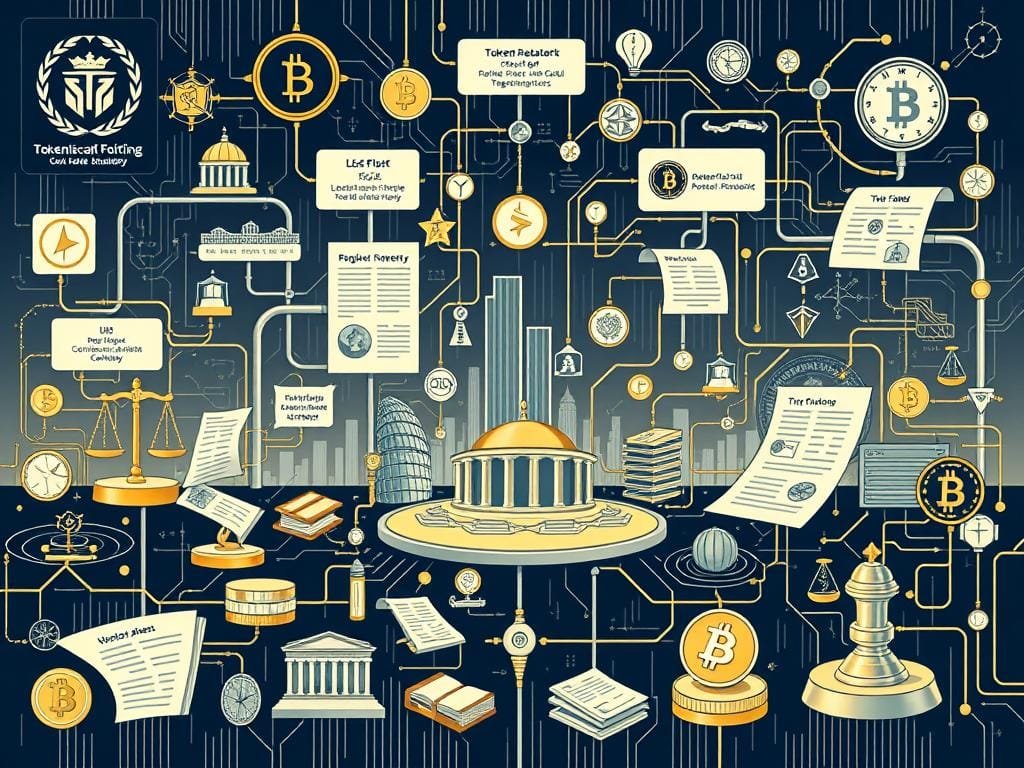
As rules keep changing, it’s important to keep up. To get ready, learn about the current rules and how they affect tokenization.
Investment Opportunities in Tokenization
The tokenization market is growing, giving investors a chance to diversify. It offers a new way to invest in real-world assets. This makes it appealing for those wanting to explore new investment options.
Why You Should Consider Investing
Tokenization lets you invest in various assets like real estate, art, and commodities. It provides increased liquidity and fractional ownership. This makes it simpler to buy and sell assets.
For example, real estate tokenization platforms let you buy parts of properties. This lowers the investment needed. Art investment platforms also let you buy shares of art pieces. This opens up new ways to diversify your investments. Learn more about tokenization’s possibilities in the CFA Institute’s report on tokenization.
Potential Returns and Risks
Tokenization has great return possibilities but also risks. Investors need to understand the regulatory uncertainties and market volatility of tokenized assets. It’s important to do thorough research and due diligence before investing.
The returns on tokenized assets can be high if the underlying assets grow in value. But, investors must be careful and manage risks well to get the most out of their investments.
Future Trends in Tokenization
Innovations in tokenization are set to boost the crypto market’s growth. Several trends and innovations are shaping the industry’s future.
Predictions for the Market
The tokenization market is expected to grow, possibly reaching a $50 billion market cap. This growth will come from more people using tokens for different assets like real estate and art.
Increased liquidity and fractional ownership will attract more investors. As the market grows, we’ll see more big investors join.
Innovations to Watch
Several innovations are coming that will improve the tokenization world. One big one is cross-chain interoperability. This will make it easier for different blockchain networks to work together.
Another innovation is institutional-grade custody services. These services will make it safe and easy for big investors to get into tokenization.
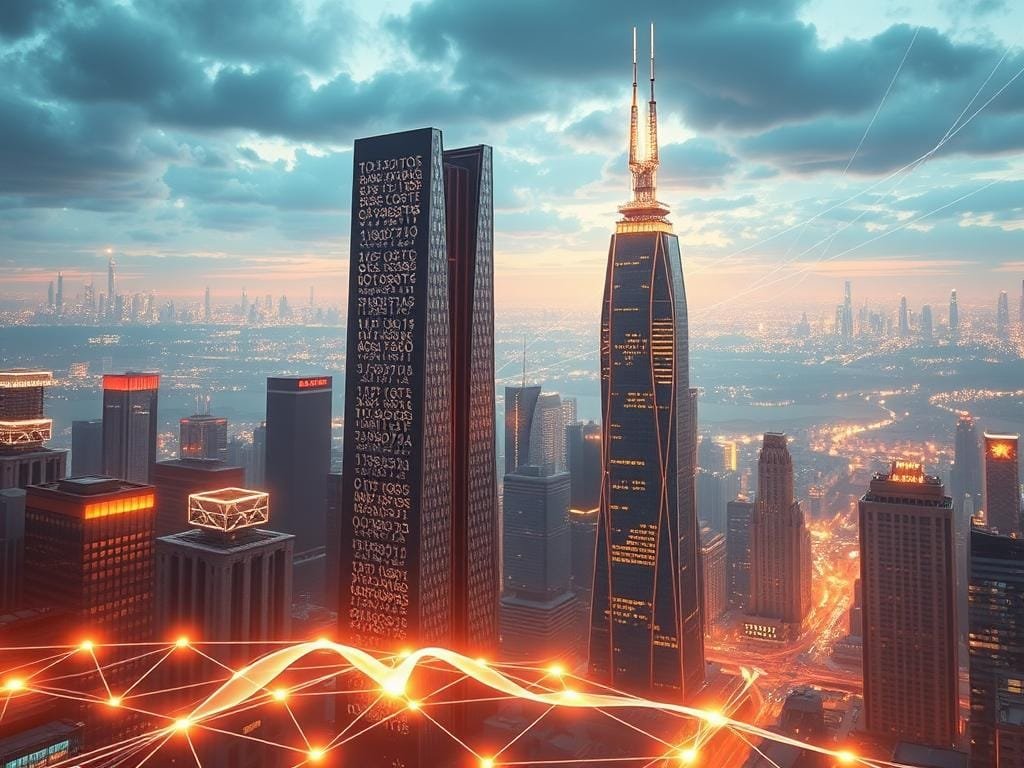
Tokenization’s future looks bright. By keeping up with trends and innovations, you can be ready for the market’s growth.
How to Get Started with Tokenization
Starting with tokenization means picking the right platform and learning about the investment process. It’s key to know the details that affect your choices. This knowledge helps you make better investment decisions.
Choosing the Right Platform
The first thing is to find a platform that fits your investment goals. Each platform has its own features, like diverse asset options, user-friendly interfaces, and robust security measures. Think about these factors when picking a platform:
- Reliability and reputation of the platform
- Fees associated with transactions and management
- Customer support and service quality
- Regulatory compliance and transparency
Understanding the Investment Process
After choosing a platform, it’s important to grasp the investment process. You need to know how to purchase tokenized assets, manage your portfolio, and track performance. Also, understanding the risks involved and possible returns is vital for smart decisions.
The investment process in tokenization includes several steps:
- Setting up your account and verifying your identity
- Depositing funds into your account
- Browsing and selecting tokenized assets to invest in
- Executing your investment and managing your portfolio
By picking the right platform and understanding the investment process, you can confidently explore tokenization.
Conclusion: The Future of Tokenization and Your Role
Looking ahead, tokenization is set to change how we manage and create wealth. By adopting this tech, you can explore new investment paths and stay ahead.
New Frontiers in Investment
Tokenization’s future looks bright, with growth on the horizon. As more assets become tokens, we’ll see better liquidity, shared ownership, and security. This will transform the financial world.
Wealth Creation and Management
Tokenization’s effect on wealth is big. It lets you own parts of assets, opening up new investment options. It’s key to grasp the benefits and risks of tokenization as you navigate this new market.
By keeping up with tokenization’s future, you can seize its opportunities. This will help shape your wealth’s future.
FAQ
What is tokenization, and how does it work?
Tokenization turns real-world assets into digital tokens stored on a blockchain. It creates a digital version of an asset. This version can be bought, sold, and traded like digital assets.
What types of real-world assets can be tokenized?
Many assets can be tokenized, like real estate, art, commodities, and securities. Tokenization makes digital tokens that show ownership or investment in these assets.
What are the benefits of tokenizing real-world assets?
Tokenization brings many benefits, like more liquidity and fractional ownership. It also makes assets more secure and transparent. Blockchain technology makes it all possible.
What are the challenges facing tokenization, and how are they being addressed?
Challenges include regulatory hurdles, tech barriers, and market acceptance. To overcome these, clearer rules, tech advancements, and education are key.
How does blockchain technology enable tokenization?
Blockchain technology makes it safe and clear to create, manage, and trade digital tokens. It uses smart contracts for tasks like dividend distribution and ownership transfer.
What are some use cases of tokenization in practice?
Tokenization is used in real estate, art investment, and supply chains. It boosts efficiency, transparency, and access in these fields.
What is the current regulatory landscape affecting tokenization?
The rules for tokenization are changing, with updates in the U.S. and other places. New regulations will help it grow.
What investment opportunities are presented by tokenization?
Tokenization offers chances for high returns and diversification. But, it also comes with risks like market volatility and unclear rules.
How can I get started with tokenization?
To start with tokenization, pick the right platform and learn the investment process. Research platforms, understand fees and risks, and make smart choices.
What are the future trends in tokenization?
Tokenization’s future looks bright with tech advancements, clearer rules, and more adoption. DeFi and NFTs will also shape the market.
How does tokenization impact natural language processing and text analysis?
Tokenization is key in NLP and text analysis, breaking text into words or tokens. In asset tokenization, it helps analyze and process data.
What is the role of machine learning in tokenization?
Machine learning helps predict trends in tokenization and improves its processes. It makes tokenization more efficient and accurate.
How does tokenization affect data preprocessing and word segmentation?
Tokenization is vital in data preprocessing and word segmentation. It breaks text into words or tokens for analysis and processing.






